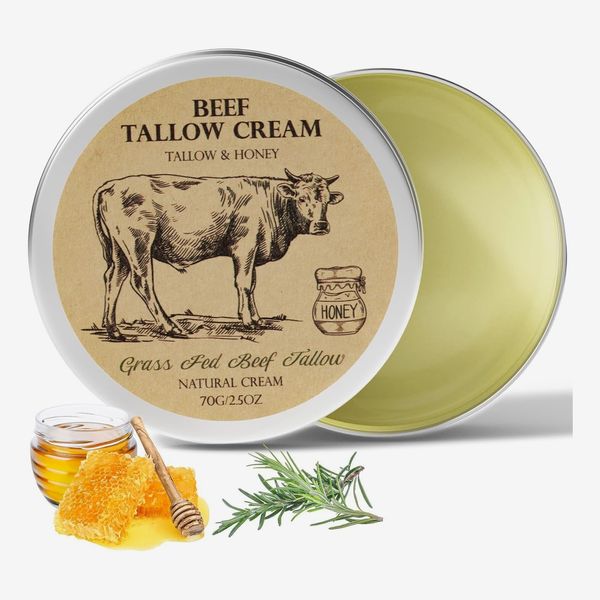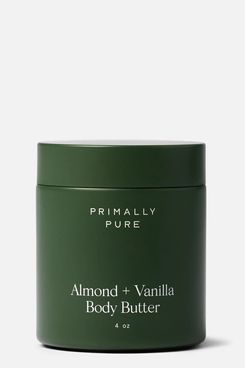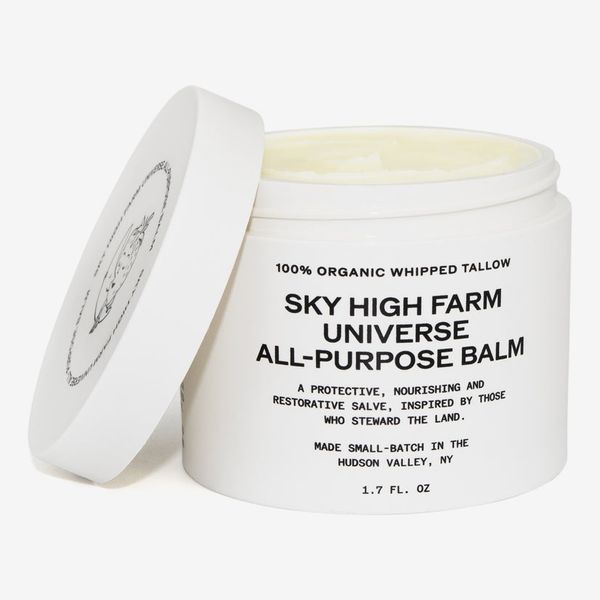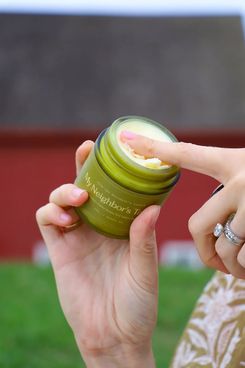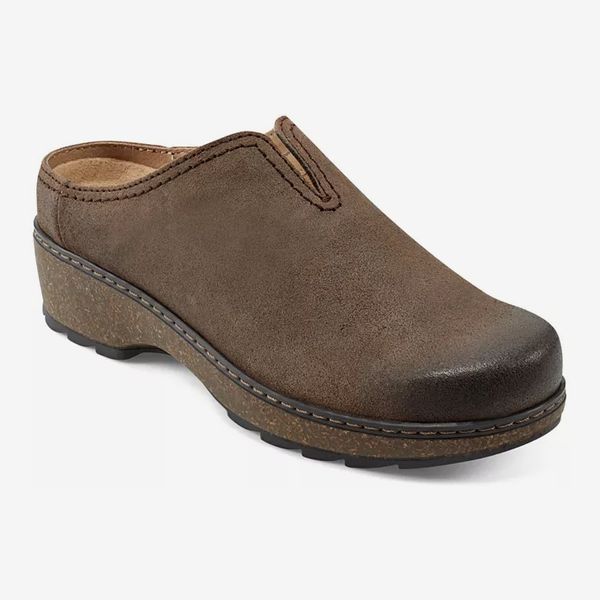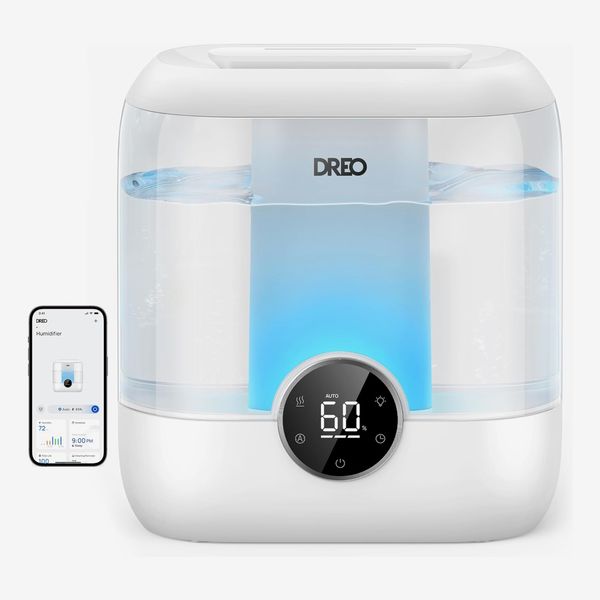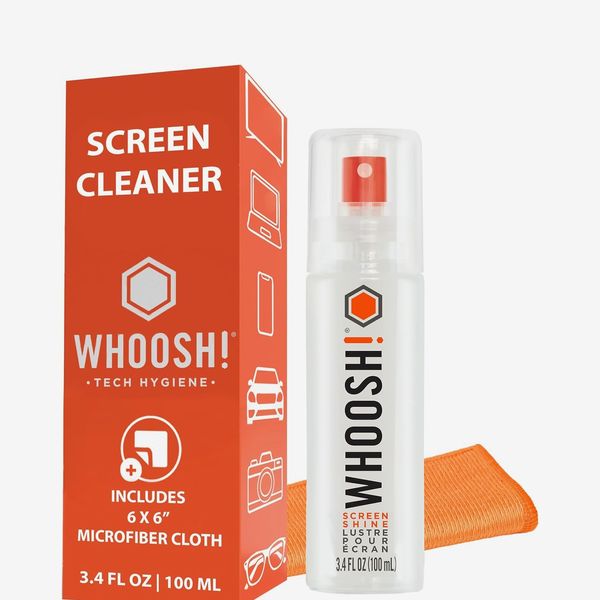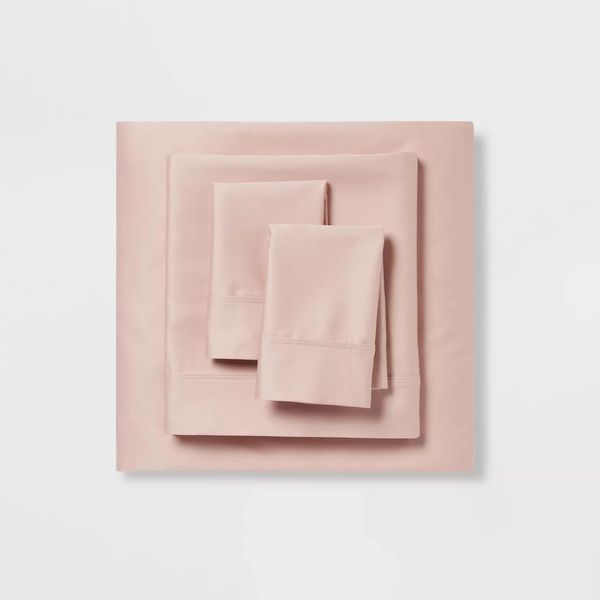
There’s always a moisturizer conversation happening in beauty: Snail mucin, barrier-repair creams, glass-skin serums. The latest thing in how-to-keep-your-skin-supple chatter is beef tallow. Beef tallow is essentially the stuff that runs off your steak — the fatty tissue that creates marbling and makes your ground beef juicy. That fat is packed with vitamins A, D, and E, as well as vitamin K, which has a host of benefits, from reducing dark spots to helping with inflammation and wound healing. Tallow also contains lots of fatty acids, which help support the skin barrier and protect skin from photodamage. Another benefit: Most skin types can tolerate it fairly well. Initially, it was popular with people who have eczema because of its ability to moisturize without irritation. Over the past several months, it has become popular among the crunchy, Goop-y crowd, men who don’t typically use skin care, and beauty enthusiasts in search of the next super-ingredient. It’s become so ubiquitous that the New York Times has reported on it and our friends at the Cut have written an explainer about it.
Beef tallow’s quick trajectory into the beauty conversation reminds me a bit of snail mucin, another animal by-product that offers similar benefits, like deep hydration and anti-inflammatory effects. Unlike snail mucin, beef tallow feels harder to wrap my mind around. There’s something off-putting about it, which is why I think, for all the reporting done about its popularity, very few people writing about it have actually tried it. Because I’m deeply curious (and a little suspicious) about it, I decided to test out several options to see if beef tallow is any good.
All the tallows I tested
First, a nameless pick: the top beef tallow on Amazon. The main ingredients are tallow and honey, and it has a slightly camphor-y smell despite no mention of it in the ingredient list. Notably, it didn’t smell like beef or anything close to an animal. Of all the tallows I tried, it had the creamiest texture, reminding me of a slightly thicker Cerave Moisturizing Cream. I’m sensitive to essential oils, so I patch-tested it on a small part of my hand, which stayed moisturized all day despite me washing my hands three times, but the smell lingered too.
Next I moved on to Primally Pure, which makes tallow-blend body butters, face creams, and deodorant. That means even though tallow is the first ingredient in the brand’s formula, the body butter also contains other moisturizers, like shea and mango butter, which I felt in its dense, rich texture. It was the closest of the bunch to a traditional shea butter, though it’s a bit thinner. I got three scents: almond and vanilla, bergamot and eucalyptus, and a limited-edition holiday vanilla and mint. Every single one made my skin glowy in the way rich moisturizers do — giving my body a nourished look for hours. (I did notice that the holiday vanilla scent smelled meaty after I rubbed it in.)
Sky High is both a nonprofit farm focused on food security and a brand making everything from hand cream with Tata Harper to upcycled Converse. When I sniffed the tub of balm, I only smelled tomato leaf, and when I asked my wife to smell it, too, she agreed. The texture is also interesting. It’s light and fluffy like whipped butter but doesn’t feel like your typical balm. It’s somewhere between a cream and shea butter, and I can’t say that I’ve used anything similar before. The main ingredient is tallow, followed by sunflower-seed oil (lightweight and noncomedogenic), honey, glycerin, rosemary extract, and fragrance. It made my skin incredibly soft and doesn’t leave a greasy film, the hallmark of a solid moisturizer. My skin is notoriously sensitive to fragrance, and I did notice some slight itchiness, which is likely due to the added “fragrance,” but for someone not as sensitive, I think they’d do just fine. Of all the products I tried, this was my favorite. It made my skin baby smooth and had this buttery quality I really liked.
Even though I was satisfied with my newfound understanding of tallow’s general appeal, I was eager to try something totally unscented with minimal added ingredients. That led me to My Neighbor’s Tallow, which has only three ingredients: tallow, jojoba oil, and vitamin E. Similar to the others, it was lightweight and moisturizing. The consistency reminded me a bit of coconut oil — quick-dissolving and thin. The biggest difference was the scent. It was beefier than the rest, closer to my initial expectations of tallow.
What makes an actually good tallow?
Curious about why the My Neighbor’s Tallow balm was different than the others, I delved deeper into how tallow is made to get a sense of what distinguishes one formula from another. The variation mostly comes down to where the tallow is sourced and how it’s processed. The first thing to consider in terms of the tallow source is the cow’s diet. For example, Harri Magaldi, founder of My Neighbor’s Tallow, works with farms like Kinderhook and Liberty that are grass-finished, meaning the cows eat grass or forage up until they are slaughtered. This differs from grass-fed cows, which eat grass until the months leading up to slaughter, when they are generally switched to grain to fatten them up. Some studies have shown that grass-finished beef has a higher omega-3 content than grain-fed. In a skin-care formulation, this translates to better barrier support, reduced inflammation, and more hydration. How much of that increased omega-3 content is passed on to you in grass-finished tallow hasn’t been studied — but the thinking is that the elevated fatty-acid level of the source will mean a more efficacious moisturizer. Dermatologist Dr. Melanie Palm says the lipid-rich composition of tallow helps with penetration. “Every skin cell on the surface of our skin and in the deeper layers is covered by little particles of fat that are composed primarily of cholesterol. Tallow’s got this cellular membrane that’s fat rich, so it’s like attracting like. It may be able to penetrate a little deeper because some of the particles are small enough to actually penetrate the skin, and it’s probably helping repair the barrier a little bit.”
How tallow is processed may also impact that fatty-acid content. There are two ways to process tallow for a topical product: wet and dry rendering. Both processes involve heating the tallow before straining it through some kind of sieve. The main difference is that dry rendering is done purely with tallow, while wet rendering uses water and salt to “purify” the tallow. Dry rendering is considered the superior process because while wet rendering results in a tallow that doesn’t smell beefy, wet rendering is believed to reduce the fatty acid content because it’s less pure. The evidence for reduced fatty-acid content isn’t vast and mostly comes from testing done by Jennifer Woodson of Grassland Beauty, a tallow-based skincare brand that sent samples of wet- and dry-rendered tallow to a lab and saw noticeably different fatty acid levels in the wet-rendered tallow. Theoretically, the most nutrient-rich tallow would be both dry-rendered and sourced from a grass-finished farm. And while some brands are transparent about the farms they work with, fewer discuss their processing methods. So how can you tell? According to Magaldi, the more it smells slightly beefy the better. A natural-scented beef tallow is more likely to be dry rendered (wet rendered is typically odorless) and be more vitamin rich. This beefiness was absent from most of the other tallows I tried, which made me think about the trade-off of formulating tallow to have a more mainstream appeal.
Of all the products I tried, only one had that telltale beefy scent — but most had snazzy-looking branding and textures similar to moisturizers already in my rotation. I think formulating tallow with other moisturizing ingredients like glycerin and shea butter and adding fragrance and essential oils impacts its value proposition as a standalone product. If the benefit of tallow is that it’s moisturizing but noncomedogenic and good for sensitive skin, only for formulations to contain fragrance or other pore-clogging ingredients, it doesn’t feel as exciting or effective as all the chatter would suggest.
This is the tallow I think you should buy
As someone who values efficacy — I’ve long defended Skinceuticals C E Ferulic’s stinky scent — if you want to try tallow, I recommend going all in and picking an unscented product with minimal ingredients. Though my personal favorite was Sky High’s balm, the last beef tallow I tested, My Neighbor’s Tallow Bambino Balm, is the one that ticks all the boxes: ethically sourced, fragrance free, dry rendered. Yes, it’s a bit beefy, but if you’re looking to get the full benefits of tallow’s anti-inflammatory and skin-healing properties, that scent is part of the deal.
The Strategist is designed to surface useful, expert recommendations for things to buy across the vast e-commerce landscape. Every product is independently selected by our team of editors, whom you can read about here. We update links when possible, but note that deals can expire and all prices are subject to change.

